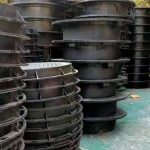
The slider is the most common mold mechanism component on the mold.In mold design, the slider is usually designed to connect the insert and the slider seat. Which connection methods have you used?
01
Use the T position to limit the position, and the screws are locked.The processing method is also simple, just cut a through groove on the slider seat and tap the teeth of a few lock inserts. It is also convenient to replace the inserts, even without removing the mold, the inserts can be replaced. The disadvantage is the lack of positioning on the left and right sides of the inserts.
The processing method is simple, the slide block is cut with a through groove:
02
The row inserts are tightened with screws. It is common in the occasions where the row position is slightly larger. The row seat and the meson are processed separately. Different materials can be used and the mold can be changed easily.
However, it should be noted that if the screw interferes with the oblique guide post hole, the screw must go deep to avoid collision with the oblique guide post.
03
In the case of multiple small cores, a pressing plate is used. It is best to have a platform at the lower end of the pressing plate for positioning as shown in the figure.
04
It is often used for needles crossing bridges. However, if there are too many needles side by side, this method may not be easy to install when installing the mold, because the needle rows are not completely fixed. ,As shown below.
05
It is a common type of pin fixing, and the bottom is locked with a headless screw, which is convenient for processing.But pay attention to avoid the oblique guide post hole.
06
Stay in the original place, usually in smaller positions. This approach is basically eliminated. The biggest disadvantage is that it is inconvenient to modify and replace, and the workload of redoing is too large!
Link to this article:What are the ways to connect the slider seat of the plastic mold to the insert?








